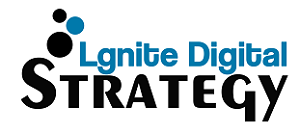With the world becoming more connected and complex, verification software will play an increasingly important role in simplifying identity authentication. As we move into a world where individuals are interacting with multiple organizations and platforms, there is an increased need for verification software and authentication services.
The following will explore how verification software works and why you should consider using it for your own organization’s applications.
Challenges of identity verification and authentication
Current systems are inefficient, expensive, and time-consuming. They are usually not secure and cannot scale with the number of users who want to be authenticated. In addition, it’s not user-friendly. The current system is too complicated for most employees to use. It also requires extensive training and manual effort—which slows everything down.
Time and cost of identity authentication
The costs of identity verification are significant. In the United States, it’s estimated that businesses spend $6 billion annually on time-consuming manual processes to verify identities. According to the Association for Federal Information Resource Management, it costs an average of $10 per hour for companies in the U.S. to process paper-based documents and other verification methods—and that’s just a fraction of what businesses spend on document management as a whole. This includes the cost of a human resource manager or compliance officer who can be assigned to this task full-time, as well as any additional administrative staff necessary to keep things running smoothly.
Using verification software for the future
With the launch of any new product or service, customers should be aware that there are inherent risks. It is your responsibility to ensure that you mitigate those risks as much as possible. When it comes to investing in new technology and innovations, it’s important to keep an open mind and know what you’re getting into before making a decision—even if someone else has suggested it. There are many ways to help improve customer experience today through verification software. This can include reducing fraud while increasing revenue by removing friction from the signup process.
A good way to simplify identity authentication
Identity verification software can automate the process of identity authentication, which helps reduce the time and cost spent on compliance. It also helps mitigate fraud risks by reducing the number of manual processes involved in identity authentication.
More so, identity verification software is an effective solution for financial institutions looking to strengthen their security processes and reduce the risk of fraud. It helps businesses verify a customer’s identity and ensure they are who they say they are through multiple data sources. The software can also be used as a standalone product or integrated into existing applications to streamline processes such as onboarding new customers, account maintenance, and more.
Conclusion
With the help of identity verification software, it is not impossible to have a better and safer way to identify yourself than current methods. It is a powerful tool for businesses looking to strengthen their security processes and reduce fraud risks. The software helps companies verify customer identities by pulling data from multiple sources, including credit bureaus and social media profiles. It can also be used as an effective standalone product or integrated into existing applications to streamline processes such as onboarding new customers, account maintenance, and more.









